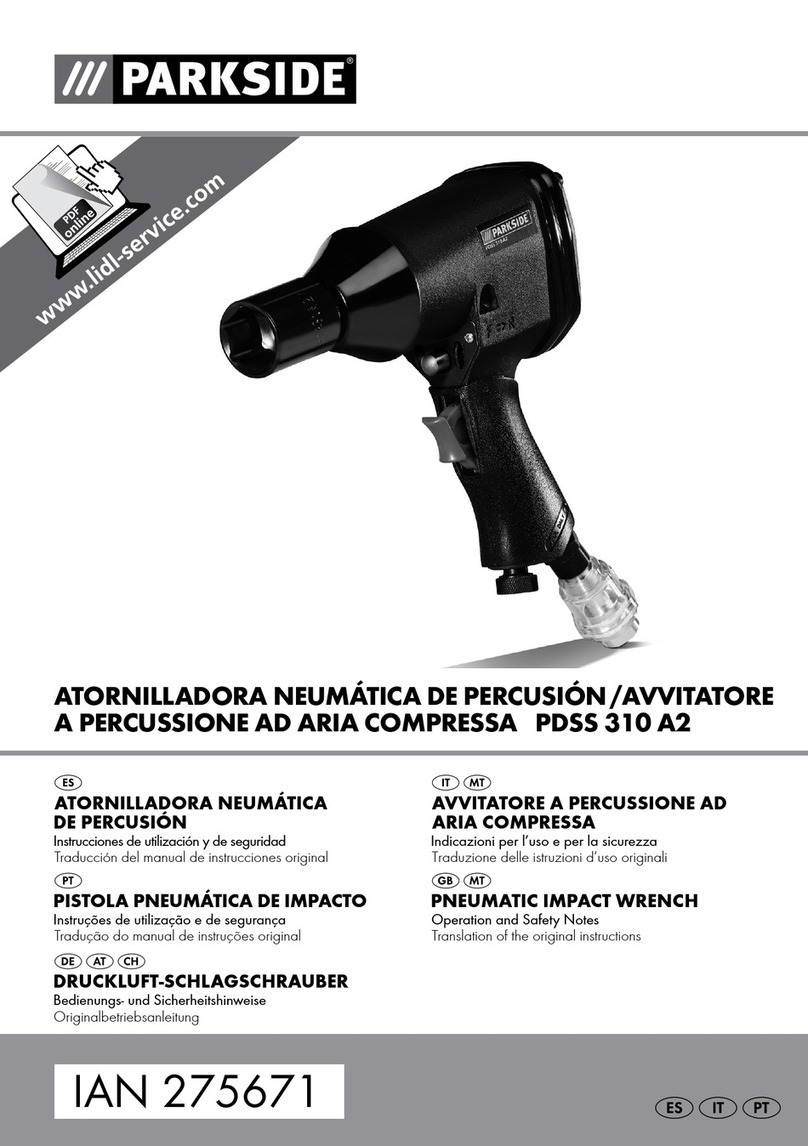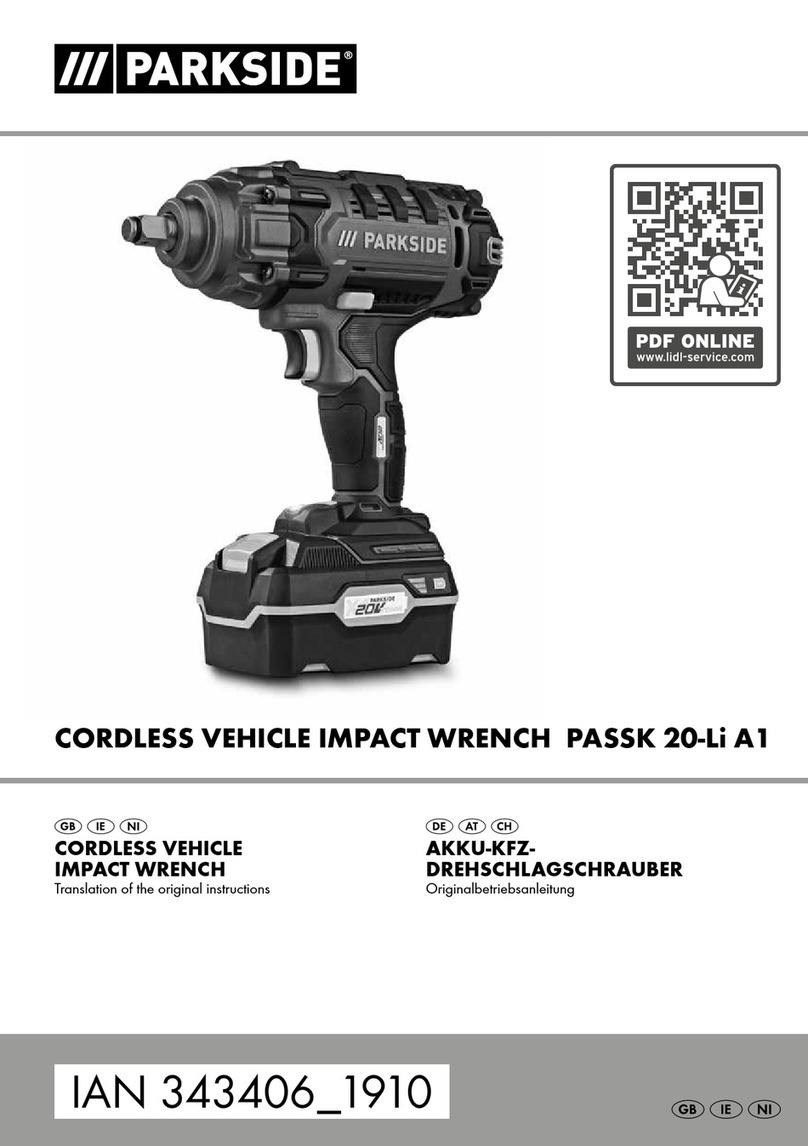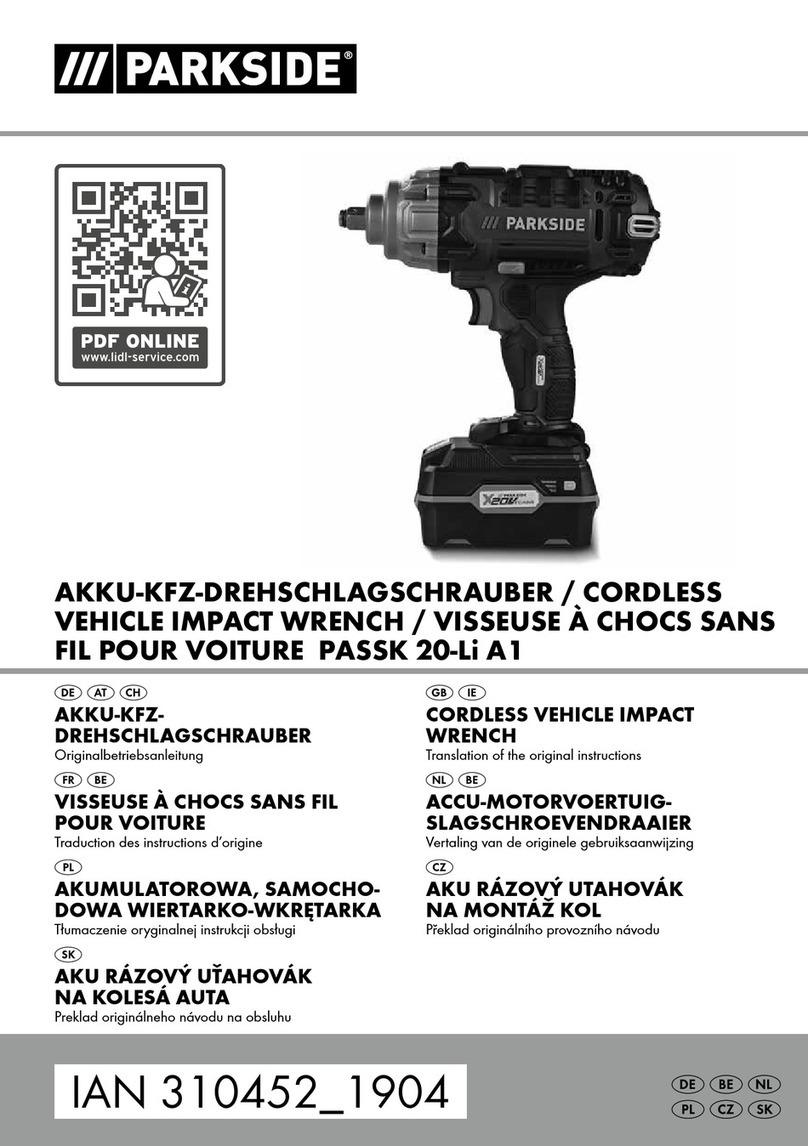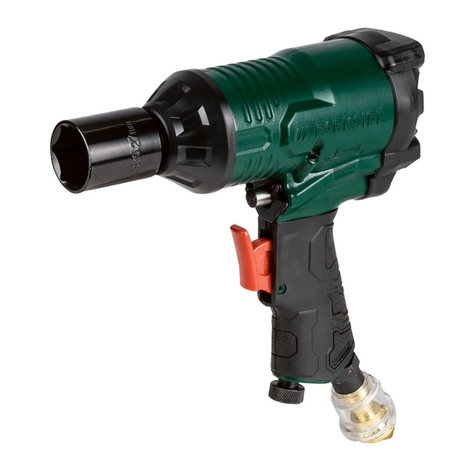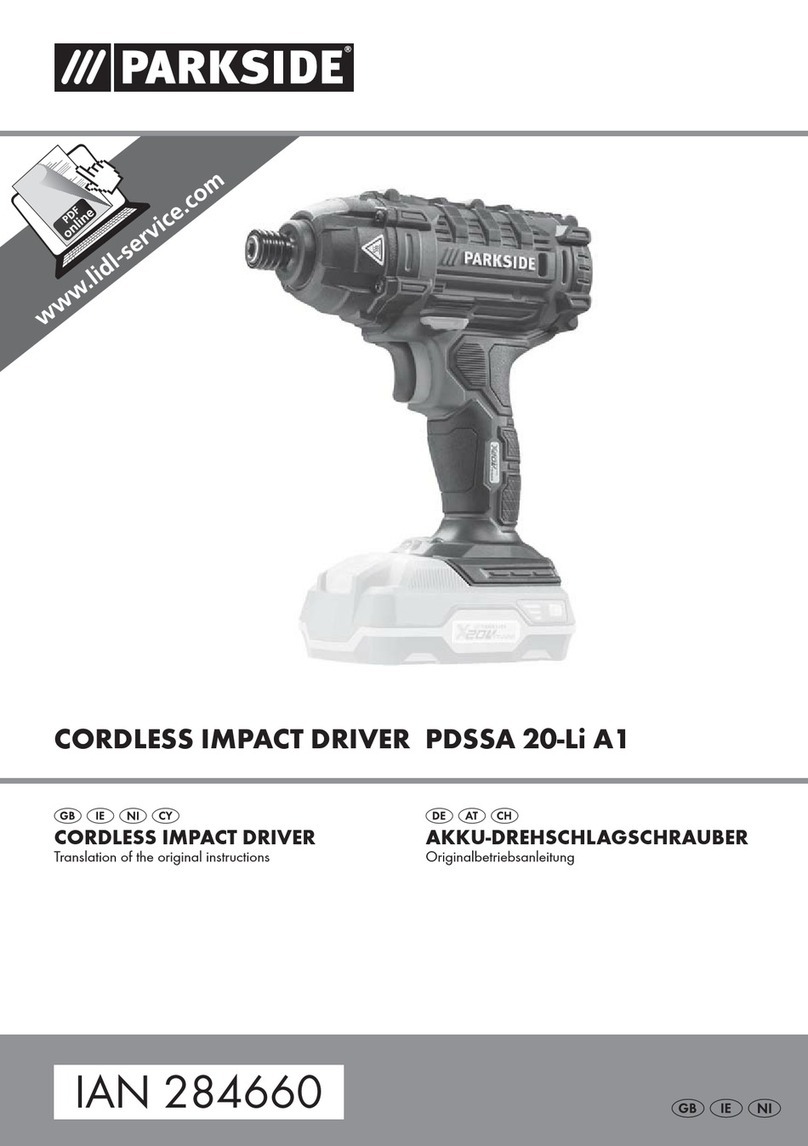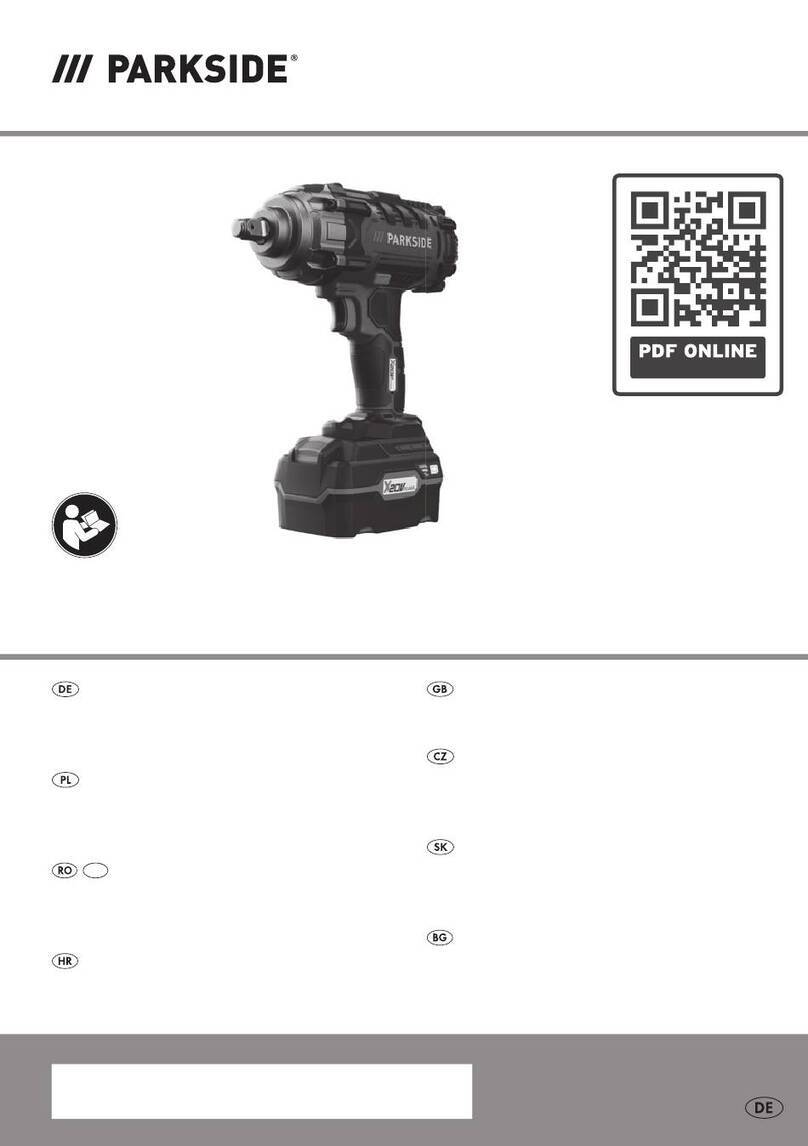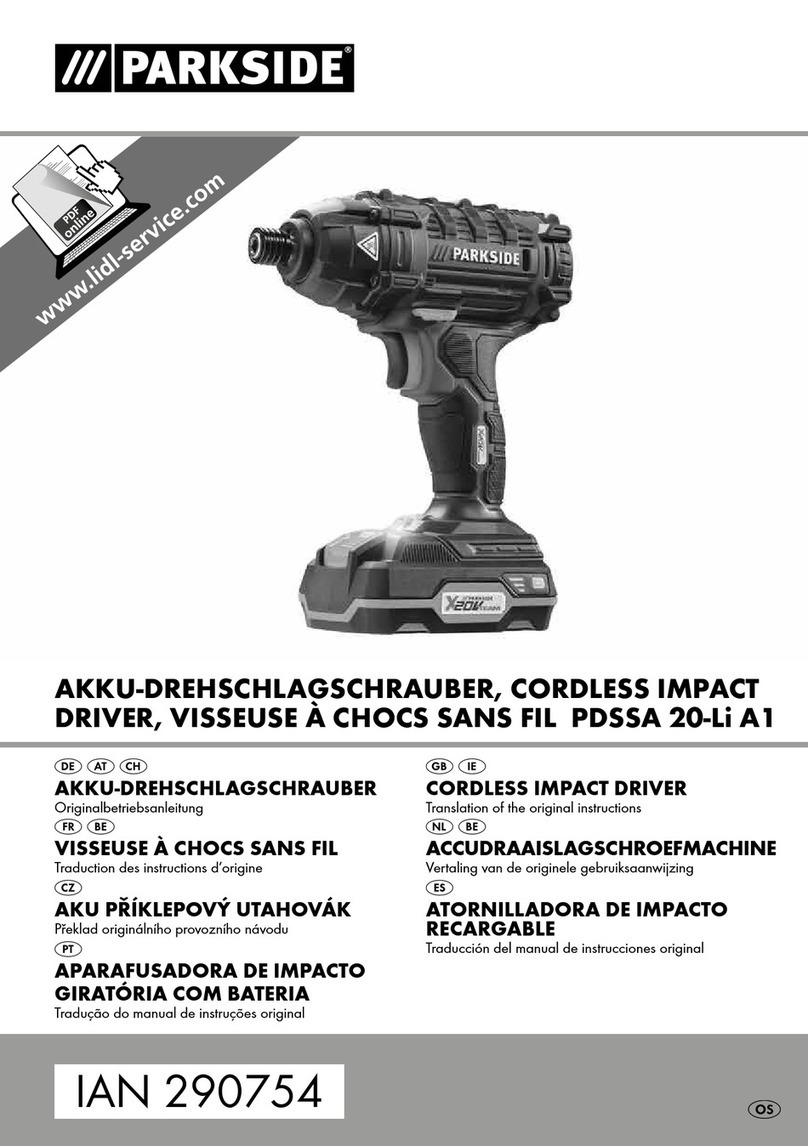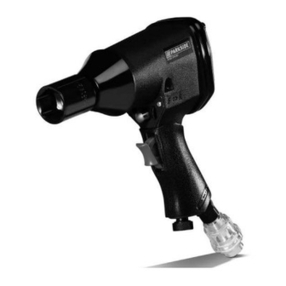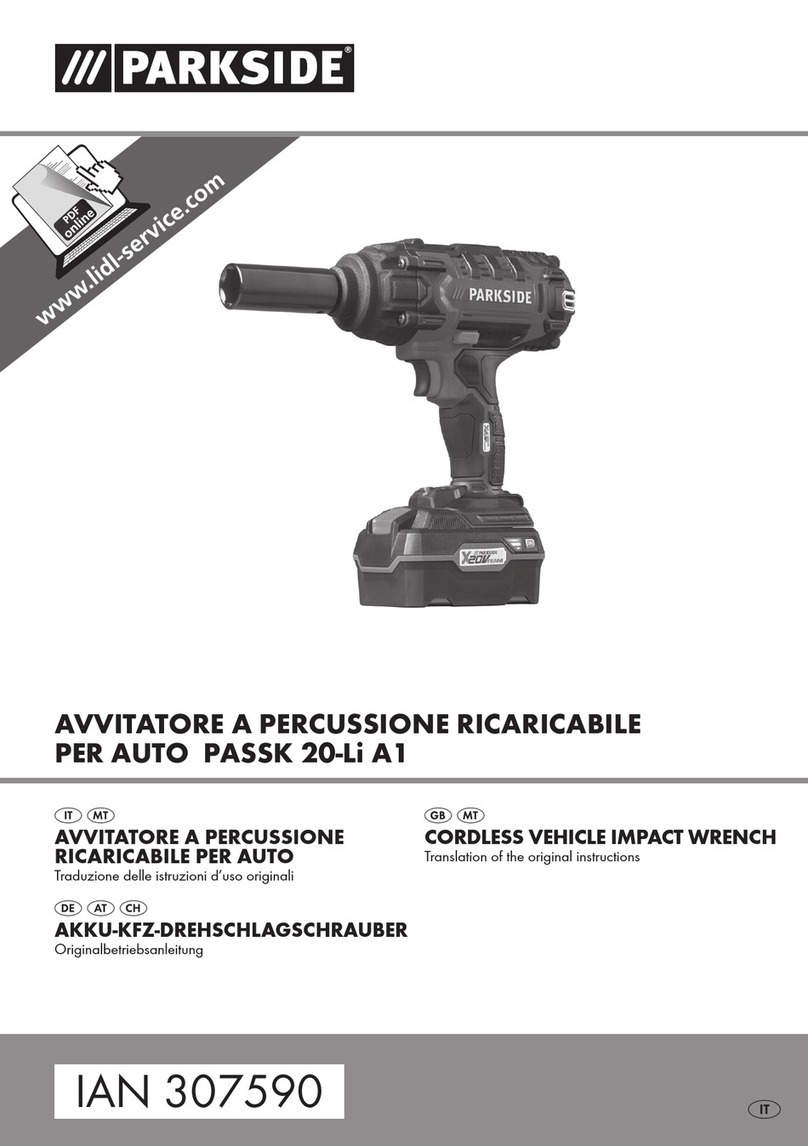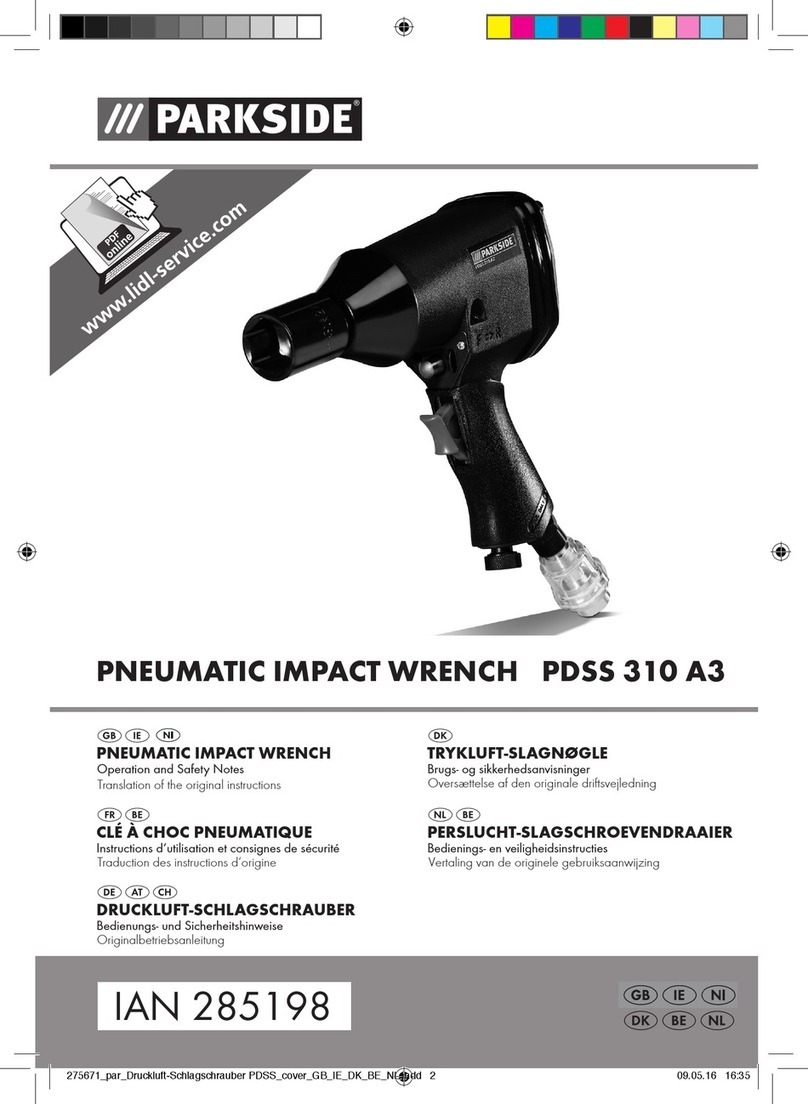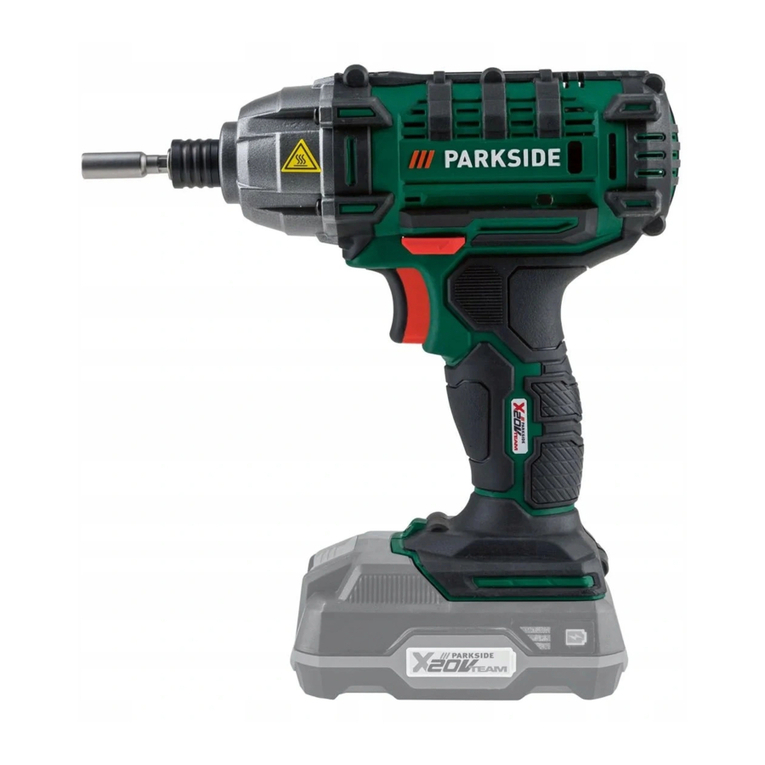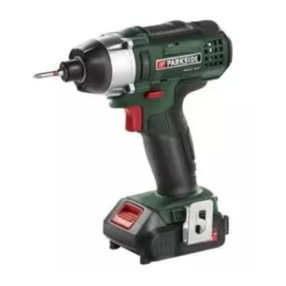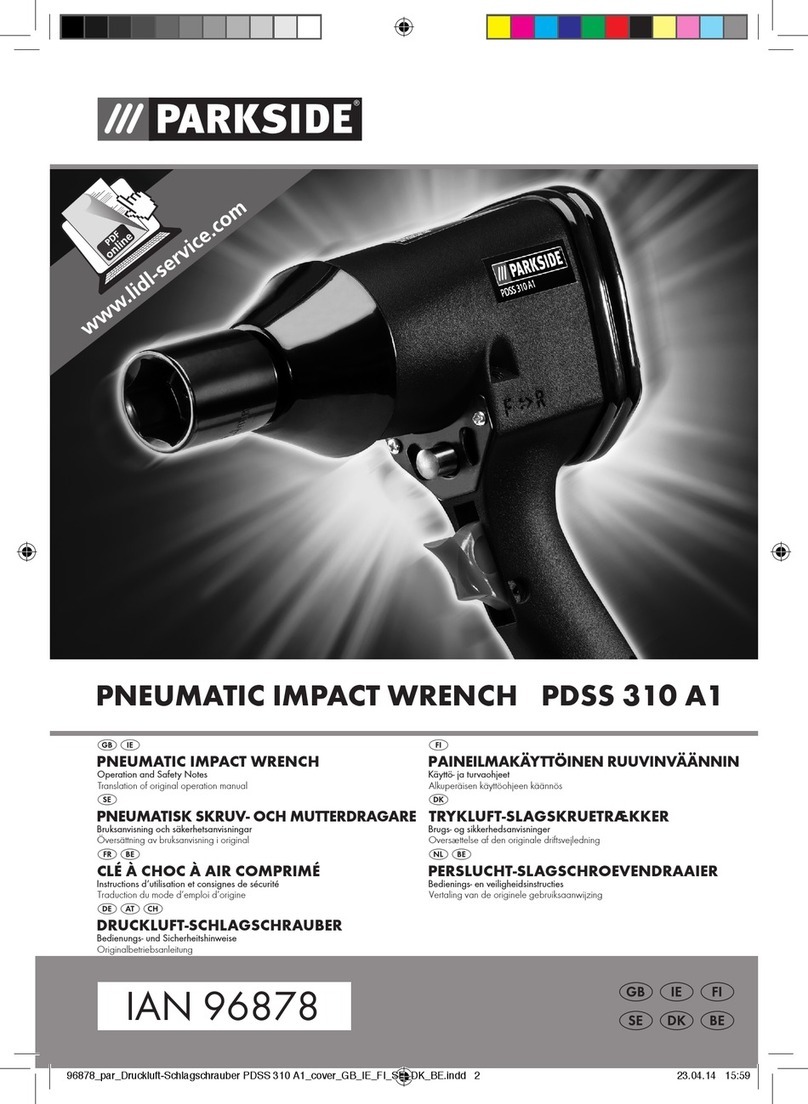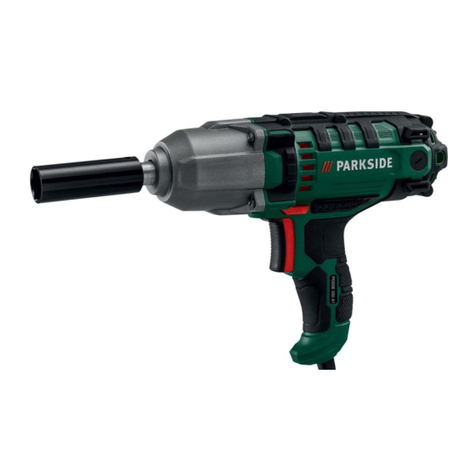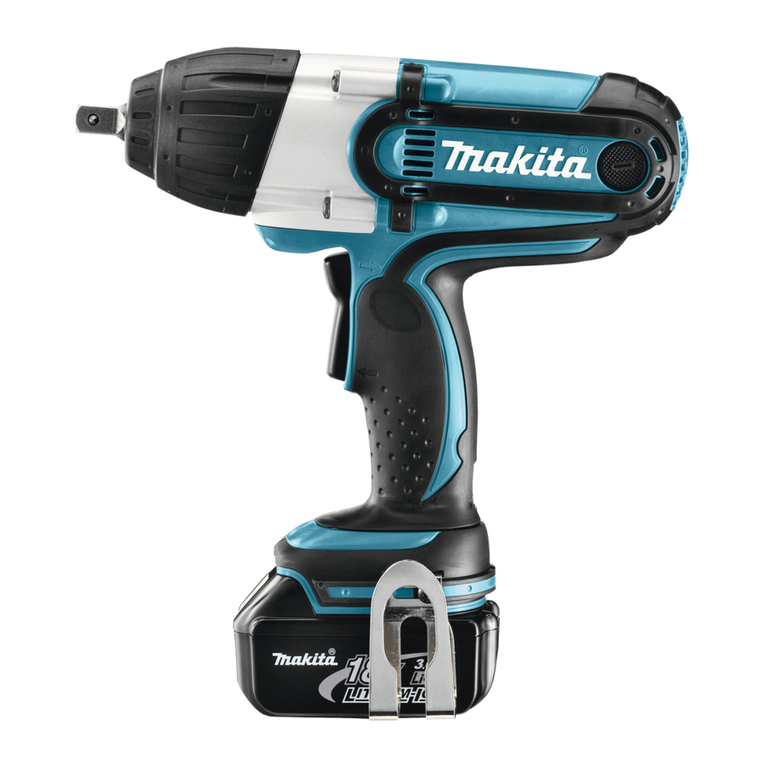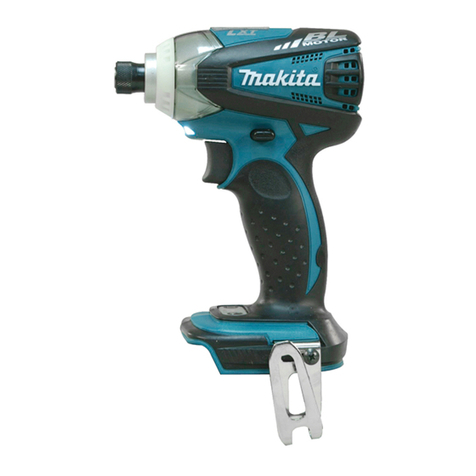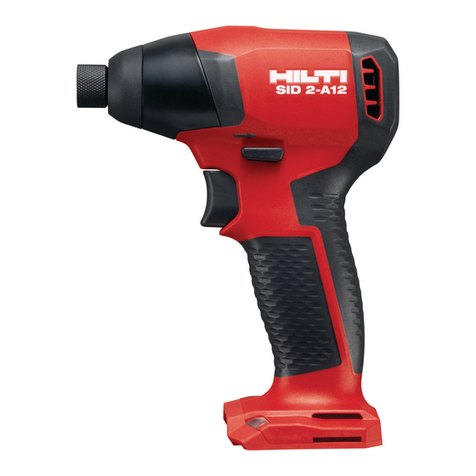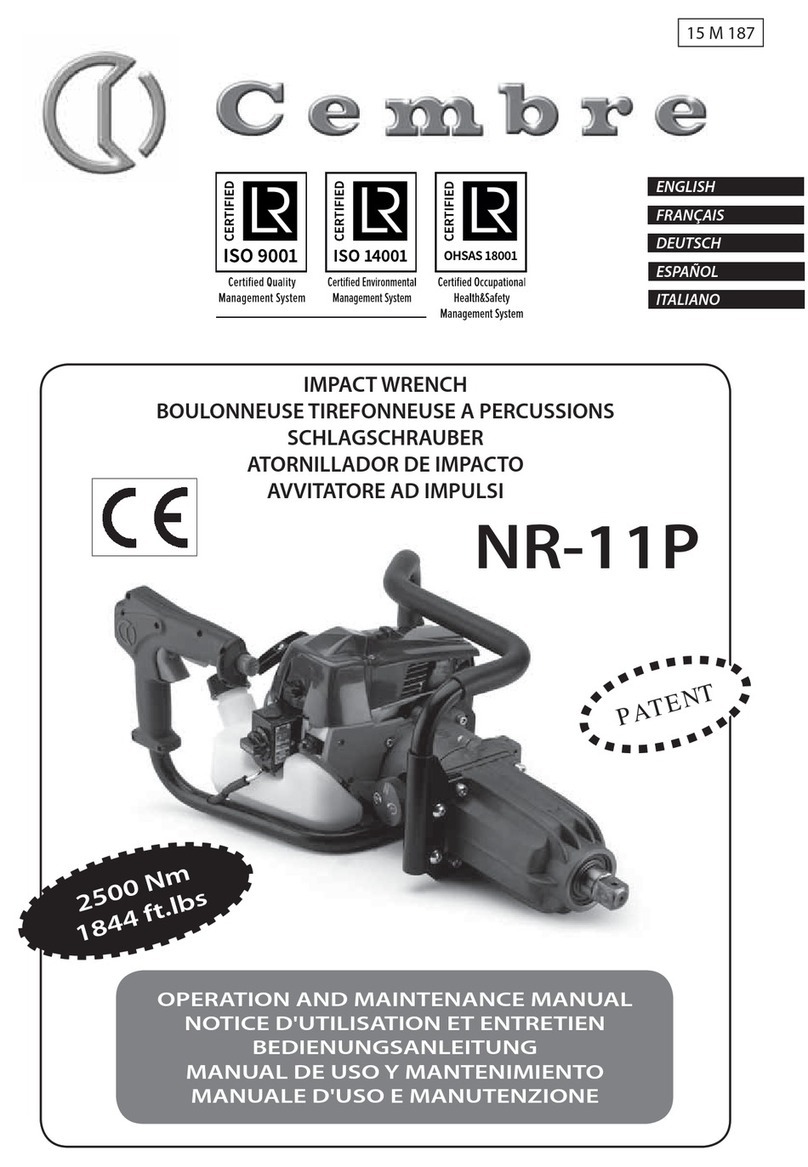
PDSS 310 B5 GB│IE │ 5 ■
■ Switch off the tool when not in use.
■ Use personal protective equipment. Always
wear eye protection. Wearing protective equip-
ment such as a dust mask, non-slip safety shoes,
a helmet or hearing protection depending on
the type and use of the compressed air tool
reduces the risk of personal injuries.
■ Check all connections and supply lines. All
maintenance units, couplings and hoses must
correspond to the tool parameters in terms of
pressure and air flow. If the pressure is too low,
the function of the tool will be compromised
and if the pressure is too high, this can cause
property damage and personal injury.
■ Protect the hoses against kinking, constriction,
solvents and sharp edges. Keep hoses away
from heat, oil and rotating parts.
■ Ensure that the hose clamps are always tightened
firmly. Loose or damaged hose clamps can allow
air to escape in an uncontrolled manner.
■ Replace a damaged hose immediately. A de-
fective supply line can cause a compressed air
hose to thrash about and cause injuries.
■ If the power cable of this tool is damaged, it
must be replaced by the manufacturer or its
customer service department or by a similarly
qualified person in order to avoid hazards.
■ Do not use the tool if you are tired or under
the influence of drugs, alcohol or medication.
A moment of inattention when operating the
tool can result in serious injuries.
■ Do not inhale the exhaust air directly. Avoid
getting exhaust air in your eyes. The exhaust air
from the compressed air tool can contain water,
oil, metal particles or dirt from the compressor.
These can be hazardous to health.
WARNING!
► BE CAREFUL WHEN PUTTING DOWN THE
TOOL! Always put the tool down in such a
way that it does not lie on the trigger. Under
certain circumstances, this might cause an
accidental activation of the tool, which in turn
might lead to hazards.
■ Only suitable accessories may be used. These
can be purchased from the manufacturer.
Failure to use original accessories can result in
hazards.
■ Use only filtered and regulated compressed air.
Dust, corrosive vapours and/or moisture can
damage the motor of a compressed air tool.
■ The hose must be designed for min. 6.3 bar or
125 psi, corresponding to at least 150% of the
maximum pressure generated in the system.
■ The tool and the supply hose must be fitted with
a hose coupling that allows the pressure to be
relieved completely when the coupling hose is
disconnected.
■ DANGER! Avoid contact with live cables.
This tool is not insulated against electric shock.
WARNING! RISK OF INJURY!
► At high working pressures, kickback forces
can occur. Under certain circumstances these
can cause hazards due to continuous loads.
■ If you are inexperienced with the tool, seek
training in how to use it safely.
WARNING! RISK OF INJURY!
► RISK OF PUNCTURE WOUNDS! Do not
treat an injection wound as a simple cut.
A high-pressure jet can inject toxins into the
body and cause serious injuries. In the event
of injection into the skin, seek medical assis-
tance immediately.
■ The compressed air tool must not be modified in
any way without the manufacturer's approval.
■ Use the compressed air tool only at the specified
pressure.
■ The compressed air tool must always be discon-
nected from the air supply after use and for as
long as it is not in use.
■ The compressed air tool must not be used if it is
not airtight or if it requires repair.
■ Never connect the compressed air tool using a
compressed air hose whose pressure exceeds
6.3 bar.
